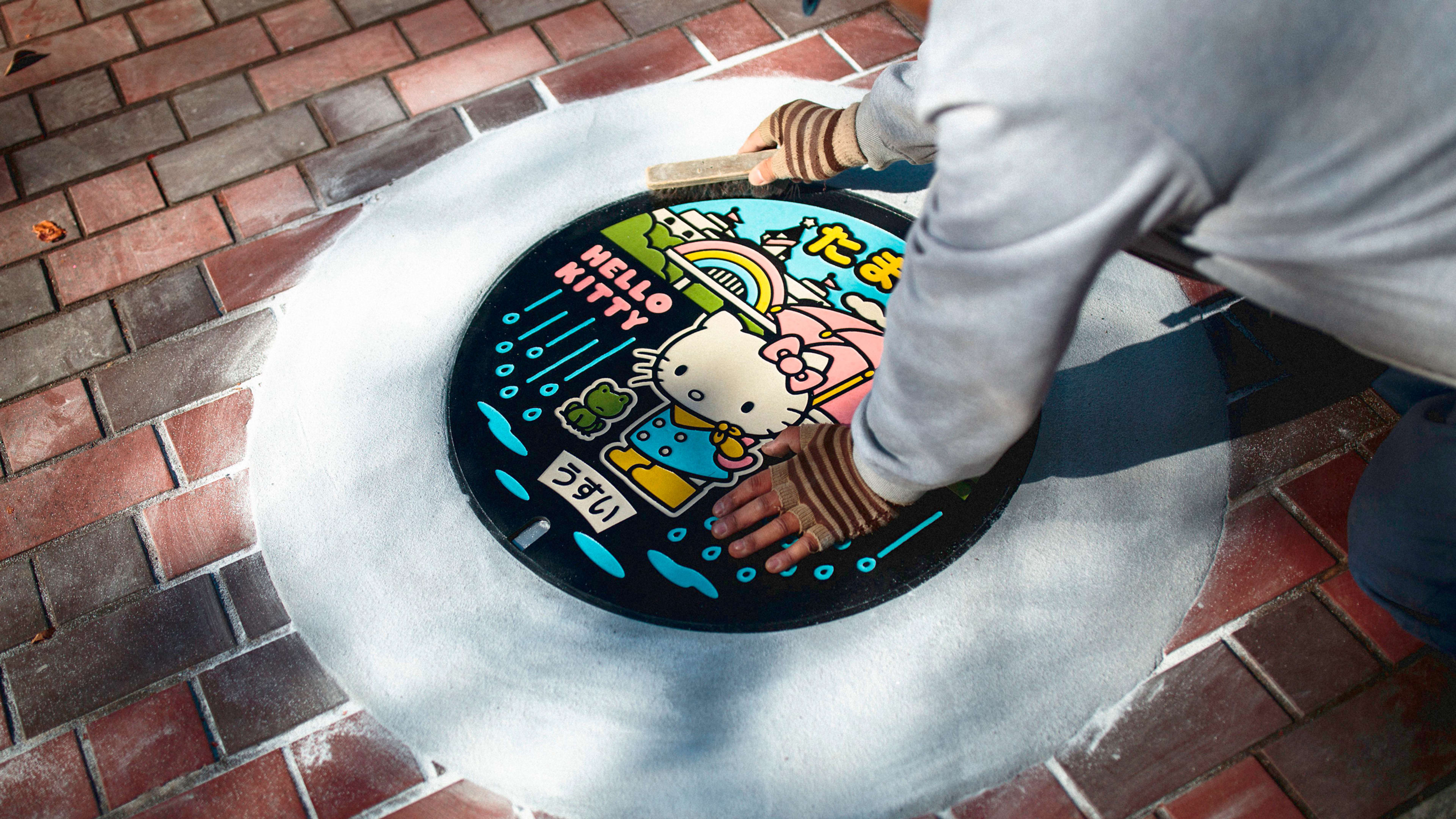Let’s talk about manhole covers. Every city in the world has them, yet no one ever pays attention to the ugly, stinking, rusty metal plates, unless they’re comically misaligned with road markings—or they get blown off by a sewer geyser.
These metal covers (also known as maintenance covers) are up there as one of the least glamorous bits of infrastructure that cities need to function. But all you have to do is travel to Japan to understand their potential to be works of art instead.
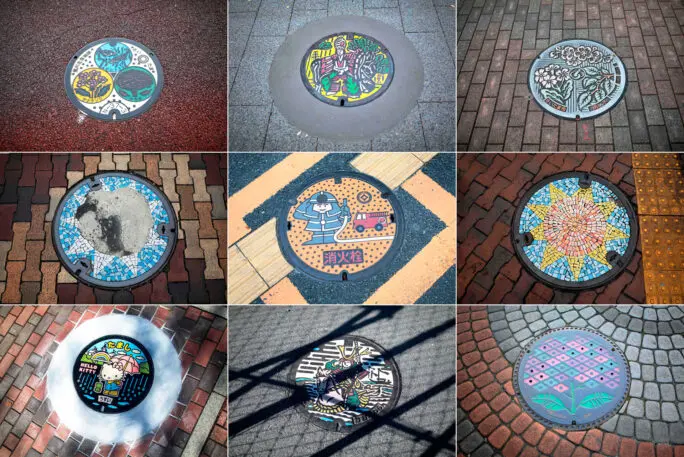
In fact, Japan is known for its creative approach to manhole covers, many of which depict symbols, events, and landmarks tied to the city or region in which they’re found. The practice started as a public relations campaign in the 1980s and has become so popular that about 95% of Japan’s municipalities today have their own customized manhole design.
A new documentary sheds light on the fascinating manufacturing process behind them, from casting molds made of sand to hand-painting the finished plates. The video was created by Process X, which has documented other manufacturing systems in Japan. It takes viewers behind the scenes of the largest manhole cover manufacturer in the country, Hinode Suido, in operation for more than 100 years.
The process begins when a giant magnet operated by a worker picks up a pile of steel scraps from a dumpster and releases the clinking contents into another dumpster that is then wheeled to a giant furnace. Meanwhile, various molds are created using sand. Known as sand casting, this is one of the oldest known casting methods and can be traced back to the Shang Dynasty in China, around 1300 BC.
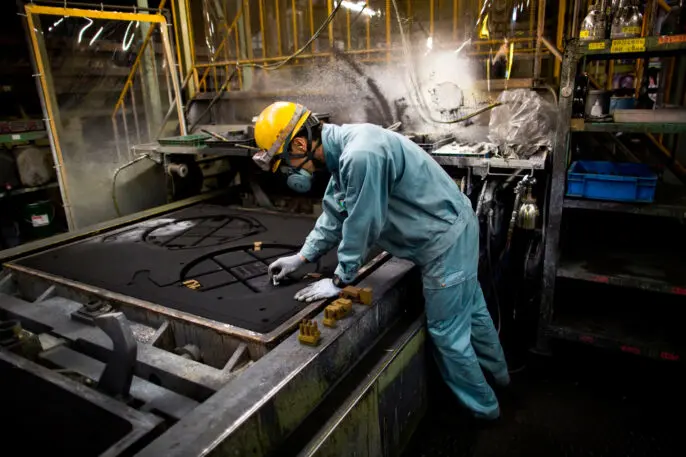
The molten steel, which looks like blinding liquid fire at this stage, is poured into a steel bucket, then into a well, then into the molds. Once the steel has cooled and hardened, the sand molds are broken. An operator wielding giant claws lifts the newly minted manhole covers and slots them into individual baskets hanging from a conveyor belt system reminiscent of a ski lift.
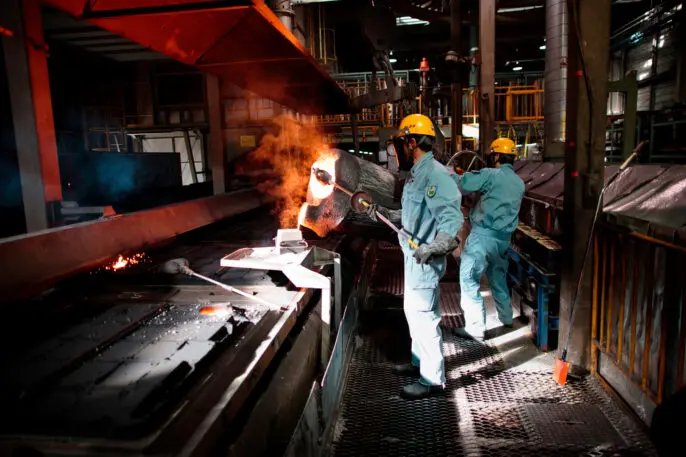
In a separate room, a team of robots polishes the covers, then an army of Roomba-looking machines wheels various stacks of manhole covers elsewhere, so they can be polished by humans. The finalized plates are fitted into racks and lowered into basins to be washed, coated with a kind of veneer that uses electrical current to attract the paint to a metal surface, washed again, then dried.
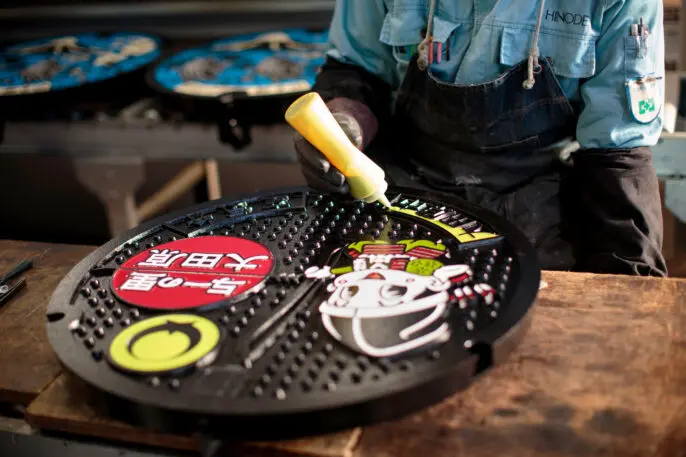
Finally, the covers are ready for beautification. The video follows craftsmen as they pour paint the color of freshly squeezed orange juice into plastic tubes, then meticulously fill in the negative space left by the molds. In one instance, the drawing shows a red truck against a yellow backdrop. In another, the illustration is so detailed the craftsmen require smaller paint tubes with more precise spouts.
The completed manhole covers are wrapped in protective film and tested for water pressure before they’re placed on the street. Who would’ve thought that so much craft and engineering could go into such humble pieces of city infrastructure.
Recognize your brand’s excellence by applying to this year’s Brands That Matter Awards before the early-rate deadline, May 3.
